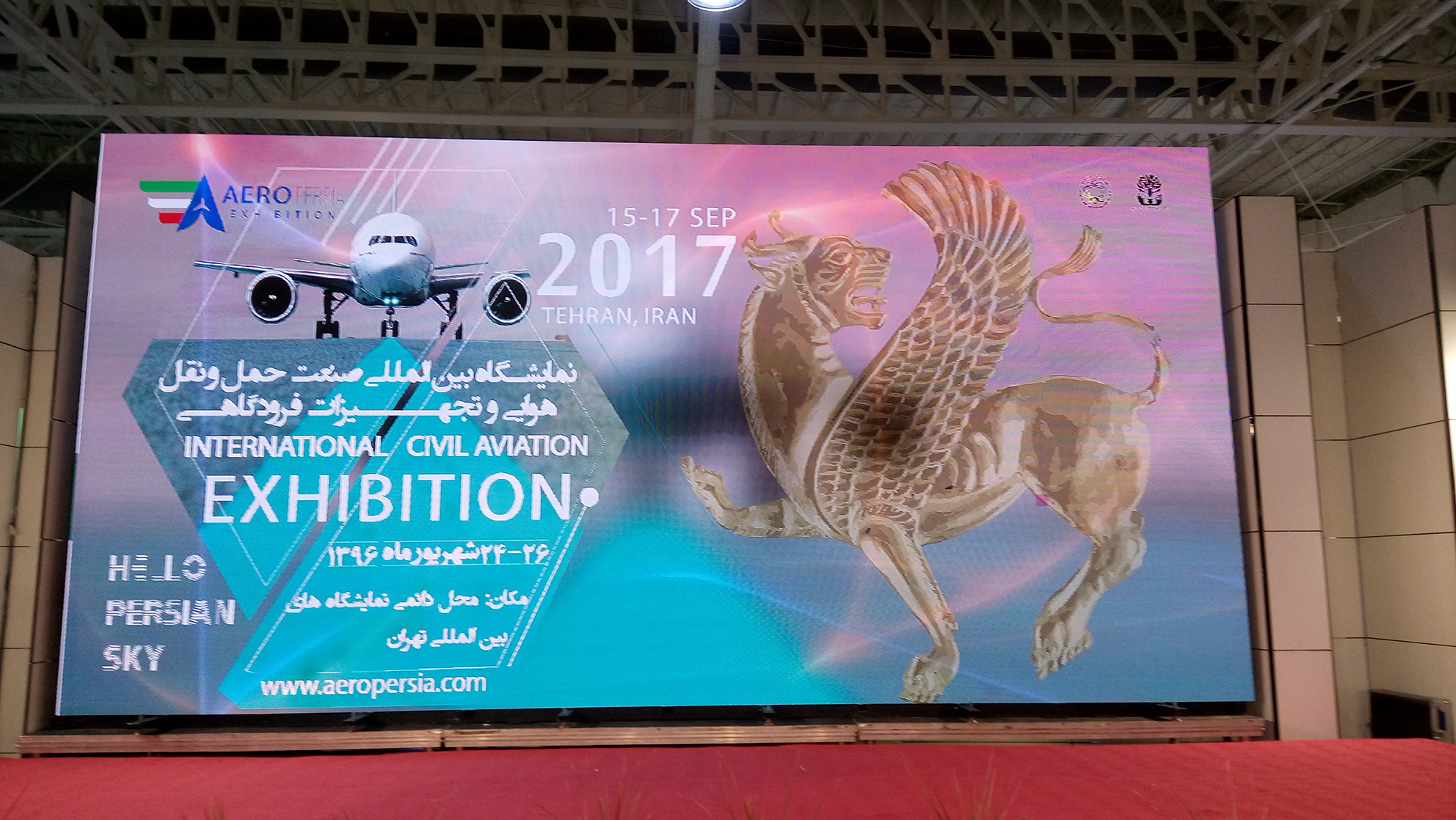Having been under the detrimental effect of international nuclear-related sanctions for years, Iran's aviation industry could not keep up with other countries in the region and lost the market to rivals, Turkey and the UAE in particular.
However, the Joint Comprehensive Plan of Action—the landmark agreement with major world powers based on which Iran swapped relief from international sanctions for curbs on its nuclear program—opened doors for Iranian airlines and Iran is now hopeful of regaining its position in regional skies.
"Iran currently loses about $4-5 billion in revenues to the rival airlines of neighboring countries on a yearly basis," Maqsoud As’adi Samani, secretary of the Association of Iranian Airlines, told Financial Tribune at the First International Civil Aviation Exhibition.
Being held for the first time in Iran, AERO PERSIA 2017 opened at Tehran’s International Permanent Fairgrounds on September 15, with the aim of paving the way for increased engagement of credible international companies in Iran to keep the country's aviation industry up-to-date. The event will run until Monday.
Several attributes would give Tehran a potential competitive edge over its regional rivals. The capital’s high altitude and temperate climate provide clear technical benefits, while its location offers more direct flight routes between Europe and Southeast Asia.
Iran has taken major steps in boosting its aviation sector post sanctions. To renew its fleet, Iranian airlines have ordered a total of 323 (with the option of adding 50 more) new jets worth tens of billions of dollars from the world's giant aircraft makers, namely Airbus, Boeing and ATR. So far, Iran's flag carrier, Iran Air, has received 7 airplanes (1 Airbus A321, 2 Airbus A330, and 4 ATR 72-600).
According to Deputy Minister of Roads and Urban Development Asghar Fakhrieh-Kashan, two more planes made by ATR, the French-Italian manufacturer of turboprop short-haul regional airliners, are scheduled to be delivered to Iran Air in September.
CEO of Iran’s Civil Aviation Organization Ali Abedzadeh told the Tribune at the exhibition that 10 companies have obtained permits to establish new airlines in the country.
"Each new airline needs at least 3-5 aircraft depending on its activity and the type of license it acquires," Abedzadeh said, adding that each new airplane seat would create four new jobs directly and indirectly.
Forging Ahead Despite US Sabotage
Ever since Donald Trump took office as US president, a series of moves have been targeted at obstructing Iran's new plane deals. The latest instance was the US House move on Wednesday to prevent sales of commercial aircraft to Iran, despite warnings from some Democrats that it would undermine the nuclear deal signed between Tehran and world powers.
The measure came despite warnings from some Democrats that it would undermine the nuclear deal signed between Tehran and world powers.
Reported by the American newspaper The Hill, Rep. Peter Roskam offered two amendments to a 2018 government spending package that would specifically prohibit the use of funds to authorize financial transactions for the sales and prevent the Office of Foreign Assets Control from clearing licenses to allow aircraft sales.
Following the decision, both Abedzadeh and Samani told IRNA that the deals will not be affected by the House move.
"We have grown used to the US not making good on its promises … All companies remain committed to the deals and are bound to implement them." Abedzadeh said.
Rise in Airport Traffic
Iran Airports Company registered 41,485 takeoffs and landings during the Iranian month ending Aug. 22, which shows a 7% rise compared with last year's corresponding period.
About 5.379 million passengers and 54,602 tons of cargo were transported during the period, indicating a 6% and 14% year-on-year rise respectively, IAC reported on its website.
According to Samani, some 18 million passengers are transported via airplanes domestically per year while 6 million return flights are made to foreign destinations.
"We expect to see a 10% increase in passenger transport by March 2018," he concluded.



